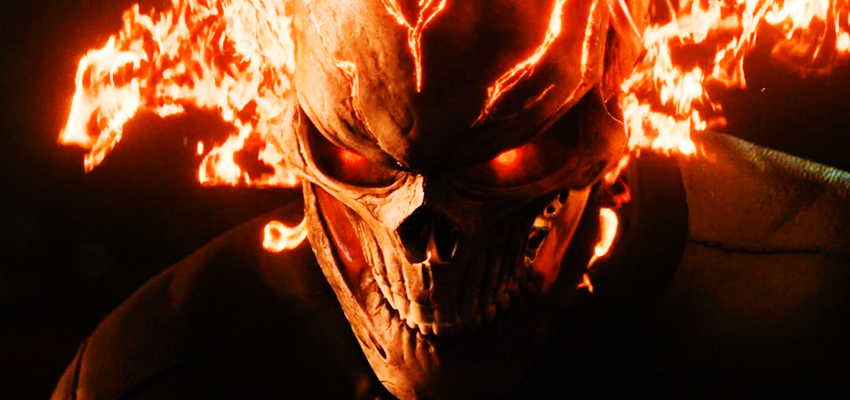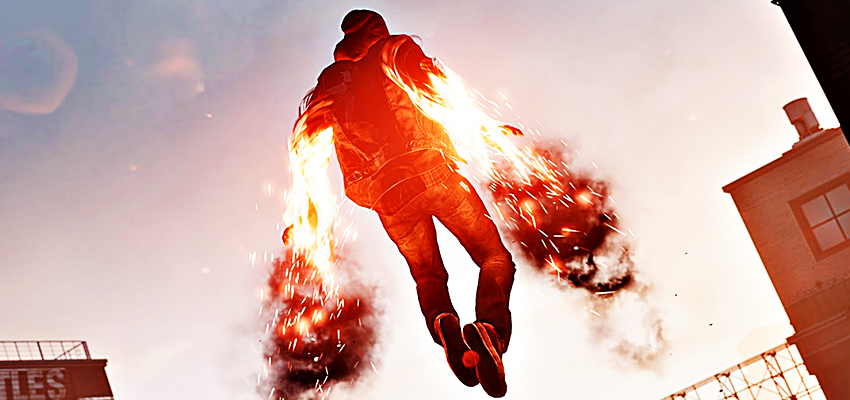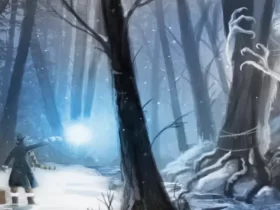The coolest superpower is probably the power to fly, because you can go wherever you want. Then again, that might get a little boring after a while since people would be always trying to hurt you just to watch you not die. Batman doesn’t have any superpowers. What he does have is money. Dressing up as a bat and chasing dangerous criminals is considered totally respectable for some reason. Sure, the ability to control fire sounds pretty cool, but there are some major drawbacks. Apart from camping, is pyrokinesis really that amazing? It would be tiring to always be rushing to every single house or wildfire with the desire to help put out the flames. Oh well, we guess we should all be grateful that pyrokinesis is just science fiction!
1 What Can Someone Do With Pyrokinesis Superpower?

The chemical process of combustion is the oxidation of a material, where heat and light are released. Flame is what we can see on the outside and fire is what happens before they flame up. In short you can generate, shape, and manipulate fire. Based on the substances alight, among other factors, the fluctuating temperature of the fire will affect what color it is and its intensity. You can add more temperature or adjust it to change the intensity of fire at any time.
Pyrokinetics are able to manipulate fire and bring about effects that wouldn’t be possible otherwise. They can create flame, heat up their surroundings, and endure high temperatures without being harmed. Users have complete control over the size, shape, color, density, and temperature of any flames they produce. With more experience they can even unleash effects of fire that would normally be impossible. Users of fire can control and manipulate it in any way that they want. They can do incredible things with it like cutting through steel or providing light when it is needed.
2 Pyrokinesis Best Application In Science Fiction

Become strong, fast and tough. Reach new heights of power. Create balls of fire! Enlarge fires. Conjure balls of fire. Start and extinguish fires. Cast Firebolts out at targets. Breathe fire and use pure thermal energy as a defense mechanism and to vaporize projectiles on contact. Shoot pinpoint flames from your finger; sense heat sources; melt any object or food from miles away like ice, metal etc.; create rings of fire to trap foes; control dangerous infernos; create force fields of heat that can bounce back attacks; throw beams of energy that create wild raging fires and make metal soft so it can be melted by the right command order!
The skill to control and manipulate fire, even if the user did not create it. The user has control over the flame’s size, shape, intensity, density. Not only that, but they can change its temperature or even the color via Fire Control. Their ability to control heat is second-to-none via Fire Aura. The power to control lava or magma is called Magmakinese. The skill to form objects out of flame is called Create Fire Constructs and discharge them as projectiles; also shooting streams of fire from the hands at opponents with Fire Projectiles.

One person can use their flame to perform delicate welding jobs and create new surfaces in any material via welding and fusing. Similarly, they can extinguish any fire within a vicinity of about 1 meter using their mental ability to extinguish fires or by just touching it with their hands. By burning opponents or objects to ash, they can also absorb any flames that are touching them–or even ambient heat if necessary harmlessly via fire absorption. However, they may also project and expel flames from their mouth like a dragon as a form of attack known as fire breath.
Via Fiery Projections, the power to generate, project, and create virtually any shapes or forms through the projection of fire-based energy. Solar Manipulation is the ability to take ultraviolet solar radiation and to turn it into heat. You can focus this projection during the day or night depending on your concentration and ability to control it.

The power to summon a massive firestorm that can travel great distances by an acre to over fifty thousand miles radius. The ability to project beams of fire from any part of one’s body at will. They are capable of destroying reinforced, solid titanium walls without effort via Blazing Bolts. The ability to spontaneously combust and cause fire without harm via Spontaneous Combustion.

In Fire breathing, the act of breathing fire creates a steady stream of flame above the head. It’s always been a dangerous activity, but it can be made less so with the right technique and the right material. This can be done for fun, for performance, as part of spiritual tradition in India, or simply to demonstrate how it’s done. Fire Eating is less risky because instead of “inviting” the flame into your mouth you extinguish it with your tongue and lips. It is usually performed by an entertainer or street performer but has also been recently incorporated into circus acts.
In thermokinesis, the ability to use your thoughts that leads the heat all around you to manipulate the environment. Users can produce thermal energy as a defensive barrier that vaporizes nearly any projectile. Things like ice, metal, or even food can be melted with just a touch. You can also absorb the heat of any enemy who is near.
3 Firebenders Are the Ideal Example Of Pyrokinetic Character In SciFi

If a firebender is good, they can do a number of things: create new flames, increase the intensity of existing ones, resist and even be immune to their own firebending, shape flames into any form they can think of, heat objects up or cool them down from a distance, sense the thermal energy or map out an area with infrared vision, control lava and shield themselves with flame. Don’t forget that firebenders can also teleport through fires and radiate heat. They may also breathe fire as long as they have fuel in their lungs.
4 Constraints & Barriers Of Pyrokinesis Superpower
A wise person uses control, discipline, forethought, and restraint. Reckless use of the power can be disastrous.
How far, how heavy or how precise an object will be thrown or lifted depends on the knowledge, skill and strength of the user, as well as the power they’re using. Mass, precision or distance and more are affected by the knowledge and skill of the user. As they increase in power, so do their natural limitations.
Fire Immunity, Fire Resistance, and/or Thermal Resistance might not always be a feature of the Superpower, which means you’re at risk of burning yourself.
Smoking may have other side effects, like smoke or an unpleasant smell when you breathe.
Characters may not be able to create fire, being only able to manipulate existing sources.
Being hit by too much water can greatly impact a user’s ability.
5 Fire Elements In Ancient Cultures
Fire is a powerful and awe-inspiring element that has fascinated people for hundreds of years. The Ancient Romans and the Ancient Greeks established the four natural elements of earth, wind, water, and fire as a way to understand science. With the protective power that fire gave people, it is not surprising that it was considered magical and mysterious to civilizations in the past.
The importance of fire cannot be understated easily. Fire was used for melting metals, cooking food and keeping ourselves warm. This natural element was an important part of life for the human race, and it’s no wonder that it often played a central role in creation stories. Ancient Greeks saw fire as the symbol of all the wonder and power in our world, while many other cultures tell fire-based creation stories.
Fire is vital to human survival. Given the significance of this element, many cultures also see it as essential to their origin stories. You can find myths that use fire to represent all the wonder and power of the world in many cultures, from Ancient Greece and their story about how humans were born from a blaze.
6 Mythical Dragons With Pyrokinesis Powers
In these stories, mythical creatures like fire giants were often based on the existence of combining certain animals. They usually had strange bodies and were endowed with some kind of special power or magic. Dragons were often associated with fire because they could breathe out fire. Phoenix bird could rise from the ashes of its predecessor.
Dragons are mythical beasts that breathe fire and are an exciting part of ancient stories. Every culture has some type of dragon creature in its myths, including tales about famous dragons like Fafnir from Norse mythology, who guards a treasure of gold and jewels.
The word dragon comes from the Greek word drakon, meaning to watch, which is how dragons guard their treasures. Legends told about mythical dragons often involve protogonists, heroes and princes who slay the dragon to prove their strength, acquire the hidden treasures, and save lives.
The traditional dragon of western culture is a large reptile with wings, sharp talons and the ability to breathe fire. These dragons capture maidens and terrorizing villages, hoarding treasures and laying waste to everything in their path. In Brazil, though, the dragon was a huge fire serpent with glowing eyes that helped to protect the forests.

Eastern dragons are thought to be very different from Western ones. Chinese representations of dragons are long and scaly, just like a snake or a crocodile like creature, although with four legs. Unlike Western dragons, Chinese dragons don’t represent terror and destruction; instead they’re associated with wealth, good luck and strength. Further Korean dragons are also quite different from Western ones in that they have a long body like a snake and four legs. The Korean dragon’s head is usually the combination of other fearsome animals – tigers or pigs – which symbolizes power and strength.

Many myths surround dragons, and where they predominantly exist. One popular myth is that of St George, the patron saint of England. He killed the last dragon terrorizing England and became a national hero. The Welsh flag features a dragon breathing fire, making them the Welsh national animal.

7 Djinn With Fire Manulation

Djinn (also known as Jinn and genies) are supernatural mythical creatures from Arabian legend. They are born from smokeless, scorching fire and have a human form. Djinn can be quite malevolent in myths, and many of them are evil and use their fire manipulation powers to harm others while others are generous towards humans, granting wishes and protecting those who are in need of help. There are also different kinds of Djinn that never commit to be evil or the good one.
8 Famous Pyrokinetic Characters In Movies & Mass Culture
Scorpion – Mortal Kombat

Mortal Kombat is famous for its violence, brutality and the gore. When users kill their opponents, they get to choose to do a violent and gory “fatality.” Hanzo Hadashi killed his family at the hands of Bi-Han (Sub-Zero) and promised retribution with his dying breath. After centuries studying how to channel the fires of hell, he comes back to the mortal world thanks to his descendant Cole Young. In an obvious apparition of his popular “Mortal Kombat” fatality, Hadashi removes his mask and breathes fatal flames on Sub-Zero.
Firestorm – CW’s Arrowverse

The channel that has housed multiple DC protagonists is The CW. We’re here to watch the first live-action depiction of Firestorm, a hero with nuclear powers who can be formed by two individuals. One of the longest lasting duos on the show is made up of a young mechanic, Stein–Jefferson Jackson (Franz Drameh), and an older physicist, Martin Stein (Victor Garber).
When the two firestorm before the merger, Dr. Martin Stein is turned into a part of the team and disconnects from everything else. Firestorm is Jefferson Jackson but with a few modifications to make him more powerful. Just like how Mr. Stein can’t control any particular task or thing that Jefferson does once merged but they can connect or communicate in his mind without anyone finding out, and as well as how Firestorm’s hands then become more powerful than his hometown’s Human Torch’s are when it comes to both flight and flame and he becomes able to go nuclear, meaning he can unleash that power on one spot until there’s nothing left of it.
Godzilla

Not all characters you see on the big and little screens are human-like in the sense that they physically resemble a human being. Take for instance, Godzilla. When he first came about, Godzilla spread destruction and terror into the hearts of the people of Japan by destroying block after block of their cities. Eventually, he became more benevolent as time progressed and fought off otherworldly menaces like King Ghidorah.
Godzilla is a pop culture icon who has been around for decades and is remembered by many, including those who are new to the franchise with recent reboots like Shin Godzilla. Nuclear power took hold of land and life, sacrificing humanity’s innocence as witness to its ever-increasing strength.
Ghost Rider

Ghost Rider is a hero from the Marvel world of comics. He’s one of the few beings brave enough to go to Hell for power, and come back stronger. This figure has been adapted for film and television as well, but in 2007 Nicholas Cage starred as Johnny Blaze who makes a deal with the devil to save his father. The audience soon discovers that the deal was rigged, and Johnny Blaze has to take on the pyrokinesis superpower of Ghost Rider anyway.
Human Torch – The Fantastic Four

It’d be a sin to make a list of Pyrokinetic Characters and not include our famous Johnny Storm. His comic book incarnations were shown in two live-action movies, both were well-received. In fact, he had an appearance some might call controversial back in the 90s, but it was never seen by many as it was barely released in theaters. Besides being part of Marvel’s Fantastic Four team, one of his powers is to produce fire at will. That’s right; he can literally become fire.




